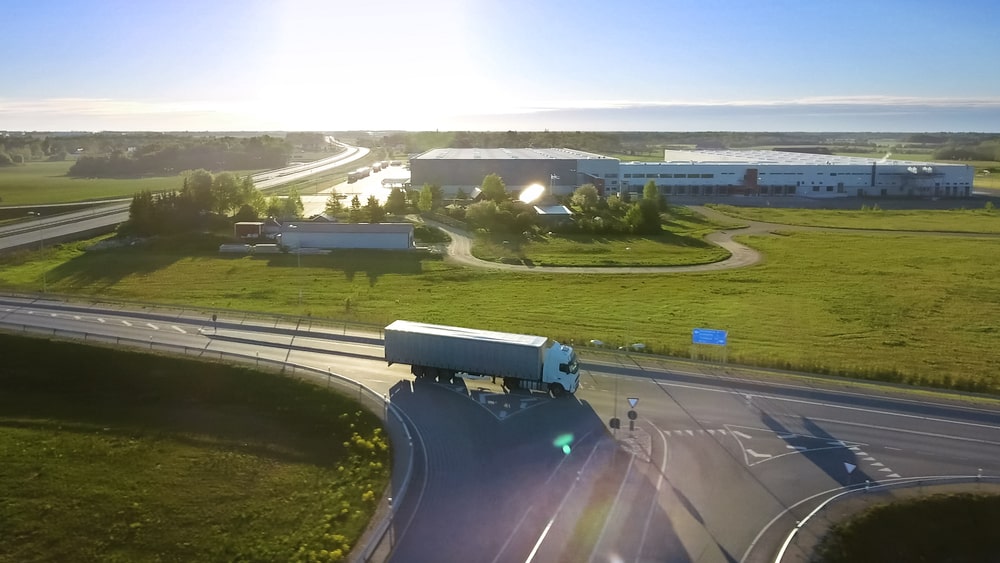How to Ship: LTL Freight

Follow These 7 (And a Half) Steps to Make Sure Your Less Than Truckload Freight Gets Delivered Smoothly
If you’d like to pick up a few things about stressless less than truckload shipping, you’ve come to the right place.
In the shipping business, we often forget about the good things that come from our efforts due to the stressful nature of the work itself. We ship carriages and toys for children, food, and drink for households, construction materials and machinery for houses, etc. That makes it all the worse when things don’t go as planned.
Making sure everything goes where it needs to is quite a lot of work and, for the lack of a better word, logistics! With all of this going on, mistakes are bound to happen every once in a while. That’s why we’ve created this guide, to help you remember some potential mistakes and avoid having your wallet remind you instead.
For example, the first tip we’d like to give you is:
1) Do not use just one carrier
We apologize to any carriers out there reading this, but the fact is that not a single carrier can offer the best pricing for all of the lanes across North America. It’s just not possible.
So shippers, do yourselves a favor and diversify your carrier selection. Freightera is based around exactly this idea. We realize that shippers (you know, the people that actually pay to have things moved) will, on average, have a much better experience if they have multiple carrier options for any given shipment.
Many shippers, to this day, make the mistake of either using only one carrier or using only one service type.
For example, many shippers are so accustomed to using FTL (full truckload) services that they will do so even if they’re shipping only 10 medium-sized pallets. And why would their carrier stop them? It costs more to rent a full truck instead of share one with other shippers, and the logistical part is much easier for the carrier if they only have to deal with your shipment instead of several.
That’s why the second tip on this list is:
2) Check whether your shipment really needs the whole truck
This one might seem obvious to most of you, but not everyone is a seasoned veteran shipper with many years of experience under their belt. The world keeps turning, and with it, new shippers are coming into the business all the time.
That’s why it’s important to stress that you have options and you don’t have to use the whole truck every time you need to move any amount of goods. If you’re unsure whether the whole truck is needed for a shipment, it’s best to check with your shipping specialist.
The topic of new shippers coming into the industry all the time brings us to our next tip:
3) Try new carriers
You may feel the need to stick with the ol’ reliable, but trust us when we say that smaller/newer carriers have every reason to make sure they provide the best service possible.
There are plenty of small, local, and up-and-coming carriers popping up all the time. After all, goods will always have to be transported. So how can they compete with the large, established names in the shipping industry?
By having very competitive prices and providing excellent service, of course. We have many smaller carriers working with us that have, in our experience, provided nearly flawless service in the past.
When carriers start growing exponentially and expanding, things (naturally) begin to get watered down a bit. Not all warehouse managers will care as much as the original crew. That’s why we can say with high confidence that smaller carriers make up for their coverage with heart and dedication.
4) Package your freight properly
This one is a bit more technical, but if you want to make sure your cargo gets to its destination undamaged and as cheaply as possible, make sure to package it properly.
As you can see in the article linked above, you don’t want to overprotect your shipment or leave it exposed either. The key is finding that middle ground.
5) Don’t shy away from using intermodal or rail carriers
Before we get into this one, we’d just like to clarify for the uninitiated that intermodal simply means transported by 2 or more means of transport at once (such as road and rail combined).
Now let’s get into it.
Some people shy away from rail freight transport because they either don’t trust rail carriers or they don’t like the fact that it’s a bit slower.
These are valid concerns but let us list some of the advantages of rail shipping and they may change your mind. At least in our opinion, the pros heavily outweigh the cons.
5.1) Cheaper
Rail carriers, due to the nature of their vehicles, have the option to transport large quantities of cargo at once. And we do mean large. Some trains can transport as much as 1600 tons in one trip.
This, coupled with the fact that they realize that their means of transport is slower than that of road carriers means that they provide cheaper rates than your standard carrier.
5.2) Just as reliable
Don’t get us wrong, there are bad apples on any branch, but in our experience, rail carriers are just as reliable as road carriers.
5.3) Reduces emissions
Lastly, and perhaps most importantly, rail carriers reduce emissions by a lot. A freight train can transport 1 ton of cargo 470 miles on just one gallon of diesel fuel.
Trains are an incredibly efficient means of freight transportation, and although a bit slower, they are one of the greenest options currently available until we make a complete switch to zero-emission transportation.
6) Consult shipping specialists
There are professionals that deal with this type of stuff for a living and they’re more than happy to lend a helping hand.
For example, Freightera’s team that does this day in and day out know exactly which carrier is good for which lanes. Some carriers are competitive on specific lanes only for 1-2 skids, while others that are expensive for that amount might get super competitive once we get into more serious amounts of cargo.
7) Use (Freightera’s) Freight Shipping Marketplace
No matter how good our staff is, our system doesn’t lie. It has parameters that it follows provided by our carrier partners and it follows them without question.
That means that, unlike human operators, it doesn’t have to remember the lanes or what amounts of cargo a carrier is good for. It simply pulls the data out for you to see and decide for yourself.
Why make phone calls or sift through numerous carrier options on Google when you can simply enter your shipment’s information and get instant online quotes from multiple carriers immediately?
Conclusion
And there we have it, those are the tips to keep in mind when shipping LTL freight. This way you’ll minimize your chances of having an unpleasant experience.
You’re free to come back to this article and refresh your memory whenever you need it, but the best thing to do now is get shipping while all of this information is still fresh.
Happy shipping! 🙂
